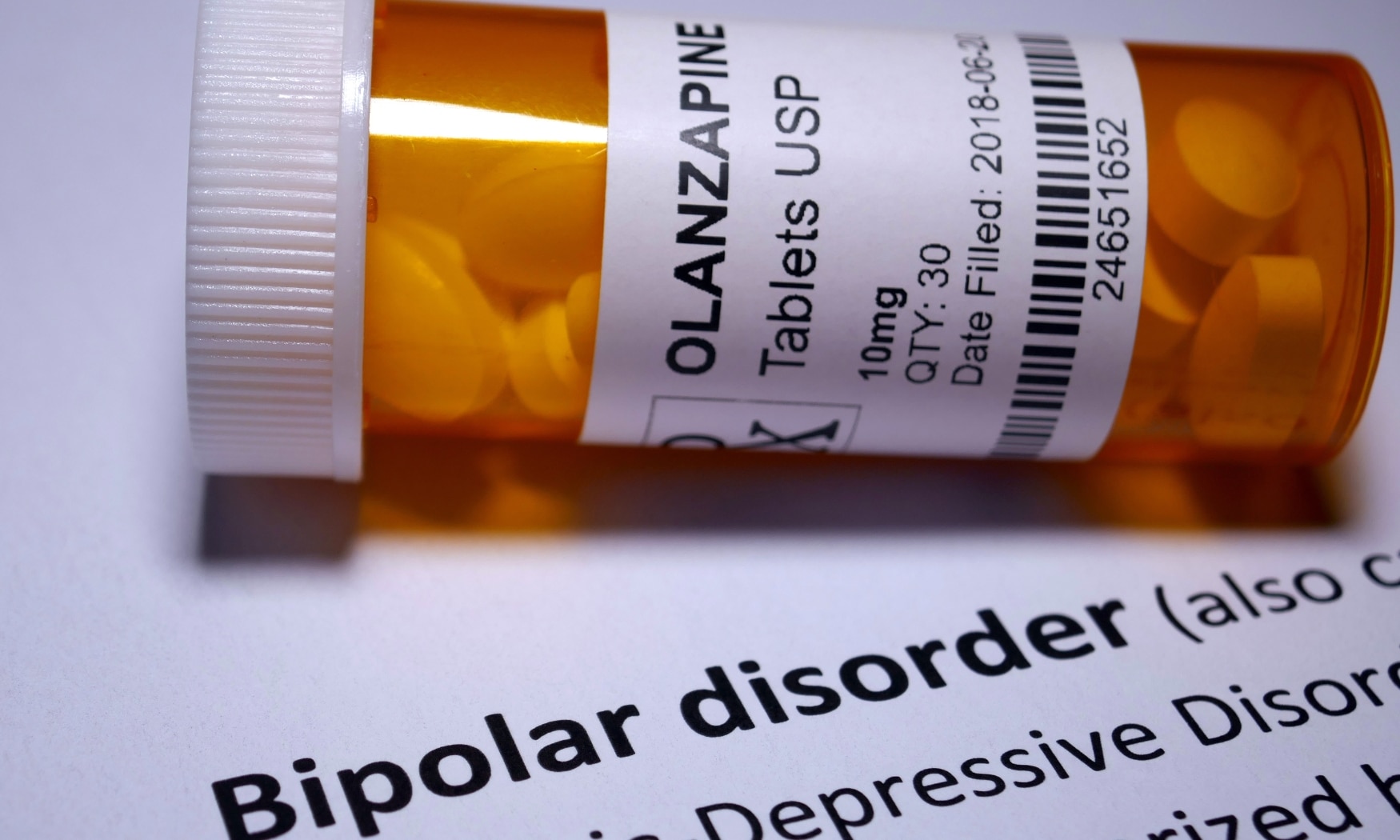Skip To Section
Bipolar Disorder
Bipolar disorder is a type of mood disorder that affects people from all walks of life. It’s characterized by significant changes in your:
- Mood
- Decision-making abilities
- Energy level
Bipolar disorder is a new term for the condition. It used to be called “manic depression.” Symptoms can include alternating periods of intense mania and major depression. Each episode can last for days, weeks, or months. This makes functioning in everyday life a huge challenge. Treatment includes medications, therapy, lifestyle changes, and self-care strategies to help manage symptoms, and improve quality of life. Children and teens can experience the same mania and depression, but bipolar disorder in adults is more common.
Mental health treatment centers treat the root causes and symptoms of mood disorders. This can help you get your mental illness under control. The clinicians at Footprints to Recovery use research-based diagnostic criteria to pinpoint the disorder. Then they use different behavioral therapies to help you achieve long-lasting recovery.
There are different types of bipolar disorder. The severity of symptoms is what sets them apart. Which diagnosis you receive helps build your recovery plan. Some of the different types include:
- Bipolar disorder I – When someone has severe symptoms or symptoms that last for more than seven days. These include severe manic episodes and major depression.
- Bipolar disorder II – When someone experiences regular manic or depressive episodes. The symptoms of bipolar II are less severe than bipolar I.
- Cyclothymic disorder – When someone experiences frequent manic or depressive episodes. They usually don’t last long, and they feature mild symptoms.
Someone can experience bipolar disorder symptoms that don’t fall into the above types of bipolar disorder. This is called an unspecified bipolar disorder. All bipolar disorders can make functioning in life difficult. They can ruin relationships, cause poor performance at work or school, lead to drug and alcohol abuse, and even increase the risk of suicide.mood

Signs and Symptoms of Bipolar Disorder
Bipolar disorder can cause dramatic shifts in mood, energy levels, and behavior. People with bipolar disorder experience periods of extreme highs (manic episodes), lows (depressive episodes), or both.
- Manic episodes are characterized by elevated mood along with increased energy and activity levels. During these episodes, people often feel very happy and find it difficult to concentrate on tasks. They may take part in impulsive activities such as spending sprees, risky sexual behaviors, or drug use.
- Depressive episodes involve deep sadness that can lead to feelings of hopelessness and despair. People may also experience changes in sleep and appetite during these times, as well as physical symptoms like aches and pains that are not associated with an injury.
Risk Factors for Bipolar Disorder
It can be challenging for someone to recognize when they’re suffering from bipolar disorder. Medical professionals can’t pinpoint one specific factor that leads to this mood disorder, but there are several genetic and biological factors that may play roles:
- Those who have a close relative, like a parent or sibling, who suffers from the disorder are more likely to see it occur in themselves.
- Periods of high stress and anxiety can lead to the development of bipolar disorder.
- Researchers have found that those with bipolar disorder experience physical changes in their brain.
The Difference Between Bipolar Disorder and Borderline Personality Disorder
Bipolar disorder and borderline personality disorder (BPD) are both mental health conditions. They are often confused with one another as their symptoms and names are similar. But the two have distinct differences in diagnosis and treatment.
People with BPD may experience intense episodes of anger, depression, anxiety, and feelings of emptiness. They may also have difficulty controlling their impulses and engage in reckless behaviors. Bipolar disorder does not always feature extreme swings of emotion. But the two conditions have overlapping features that need careful management and treatment. Both mental health disorders can have serious, long-term effects on an individual’s well-being and quality of life.
Self-Assessment: Am I Addicted?
"*" indicates required fields
Contact Form
Would you like help?
"*" indicates required fields
When Does Someone Need Treatment for Bipolar Disorder?
There’s no way to prevent bipolar disorder from occurring, and, unfortunately, it doesn’t get better on its own. But there are options for treatment that can help alleviate the symptoms and challenges associated with the disorder. The periods of highs and lows can be a major disruption in someone’s life. They can lead to risky behaviors like abusing drugs and alcohol as a form of self-medicating.
If you’ve noticed that you or someone you love is experiencing emotional instability and/or abusing substances, speaking with a mental health professional can help identifying whether bipolar disorder is the issue. It’s important to get help immediately if you or someone else is experiencing suicidal thoughts during a depressive episode.
Don’t wait to seek help when manic or depressive symptoms are getting in the way of living a healthy and productive life.
How is Bipolar Disorder Treated?
Diagnosis of bipolar disorder often happens during someone’s late teenage years, although the disorder can also appear in adulthood and childhood. Treatment for bipolar can last for a person’s whole life and usually involves a combination of medications and psychotherapy. Medications used to treat bipolar disorder include:
- Mood stabilizers to reduce extreme shifts in mood and prevent future episodes of depression or mania
- Antipsychotics to reduce symptoms such as hallucinations
- Atypical antidepressants to help with depressive symptoms
Dialectical Behavior Therapy (DBT)
Dialectical behavior therapy (DBT) is a common treatment for bipolar disorder and has been shown in studies to be effective. It has been used for decades to help people overcome mental health problems. It focuses on helping people stay in the moment. That way, they can stay in control of negative thoughts and emotions. It can also help people reduce distress, improve relationships, and achieve better mental health. That way, they remain in control of manic or depressive episodes.
A study of DBT treatment in teenagers found that patients were more likely to attend and engage in treatment with DBT. This was found to be the case over other forms of behavioral therapy. It’s also been found helpful in mood stabilization and reducing manic episodes.
Cognitive Behavioral Therapy (CBT)
Cognitive behavioral therapy (CBT) is another safe and effective treatment for bipolar disorder, as well as other types of mental illness. Treatment helps people change behavioral patterns for positive improvement. These patterns include pushing back against negative thoughts or emotions. It also involves learning coping skills to help keep thoughts and emotions stable. Through CBT, people with bipolar disorder can better manage symptoms. They can also:
- Track mood swings
- Cope with stressors
- Regulate emotions
- Increase distress tolerance
- Improve problem-solving skills
Interpersonal and Social Rhythm Therapy (IPSRT)
Interpersonal and social rhythm therapy (IPSRT) helps individuals with bipolar disorder by managing the symptoms of their condition. It is based on the idea that regularity in daily routines and activities has a positive impact on mood disorder symptoms. IPSRT helps bipolar patients identify irregular rhythms in their lives. This leads to healthier habits and improves social functioning. Through this therapy, bipolar patients are taught how to recognize when they may need additional support or assistance due to changes in their mood or behaviors.
What Happens After Treatment for Bipolar Disorder?
Following bipolar disorder treatment, there are resources and options available for you to continue following your path to a better life. Aftercare services help you remain in touch with your therapist and recovery support group following treatment. Your counselors will help devise an aftercare plan that minimizes the risks of bipolar disorder growing into a larger issue. This plan may include:
- Weekly meetings with a counselor or in a group setting
- Schedules for sleeping, eating, and exercise
- Holistic treatments for reducing stress, like yoga and meditation
- Establishing a system of support with friends and family who are there to help when you need it
Many people with bipolar worry that they’ll fall right back into the same patterns of mental illness after they leave a recovery facility. Aftercare options help alleviate those concerns, so you can continue using the valuable skills and coping mechanisms you learned in treatment.
The Connection Between Bipolar Disorder and Addiction
Studies have found that bipolar disorder is a risk factor for substance abuse. People with bipolar disorder are more likely to turn to drugs or alcohol to cope with their symptoms. Substance abuse can even worsen the symptoms of bipolar disorder. That can lead to further episodes of depression or mania. Those with bipolar disorder may attempt to self-medicate their symptoms using substances. That can unfortunately lead to a cycle of addiction and relapse. Breaking that cycle is critical for the treatment of bipolar disorder. Finding a treatment plan that works is an important step in the process. That way you can thrive while living with bipolar disorder.
Does Insurance Cover Bipolar Disorder Treatment?
Cost should never prevent someone from getting help for mental illness or addiction. Rather than paying out of pocket for treatment, insurance may cover all or part of bipolar treatment, depending on the details of your policy. Footprints to Recovery accepts most major insurance providers. If you’re wondering about paying for bipolar disorder treatment, contact Footprints to Recovery today for a free insurance verification. Our team works with each client and their insurance provider to create an effective plan for recovery.
Bipolar Disorder Treatment Options
Therapies and medication are the most common and effective treatments for bipolar disorder. A consultation with the team of mental health and substance abuse professionals at Footprints to Recovery can help outline the different options for bipolar treatment. Some effective treatment programs include:
- Medical detox – Detox is the first step in addiction recovery for people suffering from bipolar disorder and addiction, where they receive professional care to manage withdrawal symptoms, monitor their physical and mental health, and support recovery safely.
- Residential treatment program – Also called inpatient treatment, residential programs offer comprehensive, intensive clinical and medical care within an inpatient facility.
- Partial hospitalization program (PHP) – Also called a partial care program, PHP offers a set treatment program without patients living full time at the treatment facility. It’s a halfway point between inpatient and outpatient treatment that can help with the transition back to everyday life.
- Intensive outpatient program (IOP) – Outpatient treatment is a less intense program that focuses on re-integration into the world while establishing skills and coping mechanisms that will be valuable for life with bipolar disorder.
- Outpatient treatment – This form of treatment involves living full-time at home. You visit a treatment center regularly for individual and group therapy. Sessions at the facility are usually shorter and less frequent than other forms of outpatient treatment.
Get Help For Bipolar Disorder
Bipolar disorder treatment is essential for living a healthy and happy life. The hypomanic and major depressive episodes associated with different types of bipolar disorder make it difficult to live a normal life. Treatment of bipolar disorder starts with consulting with the team at Footprints to Recovery. Contact us today to request an appointment with a clinician.
- Bipolar Disorder in Children and Teens – National Institute of Mental Health (NIMH)
- Bipolar Disorder – National Institute of Mental Health (NIMH)
- Bipolar Disorder and Suicide: a Review – PubMed
- Dialectical Behavior Therapy (DBT)
- Enhancing Dialectical Behavior Therapy for the Treatment of Bipolar Disorder – PubMed
- Dialectical behavior therapy for adolescents with bipolar disorder: results from a pilot randomized trial – PubMed
- Substance Use and Co-Occurring Mental Disorders – National Institute of Mental Health (NIMH)
Our admissions team is available 24/7 to listen to your story and help you get started with the next steps.


